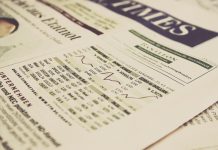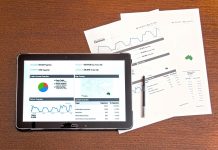
US consumer prices dropped for a third straight month in May. The coronavirus pandemic caused a recession that led to low demand.
According to the US Labor Department, the consumer price index fell by 0.1% last month after dropping by 0.8% in April, which was the biggest drop since December 2008.
The CPI gained 0.1% in the 12 months through May. This was the slightest year-on-year rise since September 2015 after following a 0.3% rise in April. Economists told Reuters predicted that CPI would not change in May and gain 0.2% year-on-year.
The National Bureau of Economic Research announced on Monday that the economy plunged into recession in February. Nonessential businesses were forced to close in mid-March to curb the spread of the coronavirus. This almost brought the economy to a halt.
The CPI dropped 0.1% in May, excluding the volatile food and energy components, after a decline of 0.4% in April. The so-called core CPI dropped in March for the first time since January 2010.
Consumer spending
On the other hand, Visa saw higher consumer spending in May as the economy recovers. This observation came after total US payments volume fell at a slower pace.
Visa’s total payments volume moved slower in May from the previous month. Analysts believe this signals that consumer spending was recovering as the government starts to lift coronavirus lockdowns.
US payments volume in May fell to 5%, compared with an 18% fall in April.
Meanwhile, quarter-to-date, Visa reported an 11% decline in payments volume, the company said in a filing on Monday.
There was a 45% decline in cross-border volumes, excluding intra-Europe transactions, that drive its international transaction revenue. On the other hand, global processed transactions dropped 12%.
The report of Visa on higher spending in May reflects the jobs increase in the US. The Labor Department reported that the unemployment rate declined to 13.3%.
The data from the government agency showed that employment rate in the US increased by 2.5 million in May. The increase is deemed far better than what economists predicted. For some analysts, it may mean that an economic turnaround could be nearer.
“It seems the damage from the nationwide lockdown was not as severe or as lasting as we feared a month ago,” said Scott Clemons, chief investment strategist at Brown Brothers Harriman.
“Barring a second surge of Covid-19, the overall U.S. economy may have turned a corner, as evidenced by the surprise job gains today, even though it still remains to be seen exactly what the new normal will look like,” said Tony Bedikian, head of global markets at Citizens Bank.
Consumer confidence
Many economists agree that economic recovery depends on the level of consumer fear.
They believe that individual psychology, consumer confidence, and the success of government in filling the income gap for unemployed individuals all play a role in reviving the economy.
Consumers’ discretionary spending for industries like dining, travel, and entertainment will determine how these parts of the economy will carry on.
Consumers stopped spending and saved more than 13.1% of their income, the most in 45 years, when they were forced to stay inside their homes.
How consumers would spend the saved cash for a recovery depends on their confidence in the economy and their jobs.






